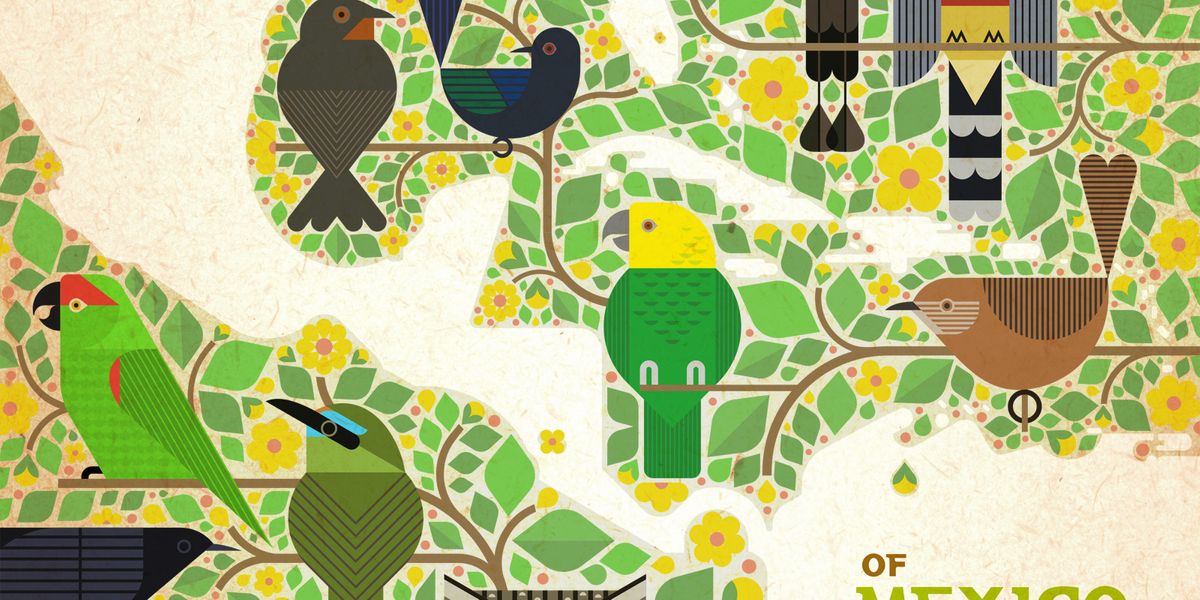It can be easy to ignore the many ways in which nature and culture are ultimately inextricable, humans, animals, and other aspects of the environment continually affecting change in one another. Music, though, offers space for reflection on the other beings in our ecosystem and how we all contribute to a broader shared soundscape and world at large.
Expressions of these ecological networks are central to A Guide to the Birdsong of Mexico, Central America & the Caribbean, the second installment in a crowdfunded album series released on Shika Shika, a label founded by Robin Perkins and Agustín Rivaldo, better known as producers El Búho and Barrio Lindo, respectively. As on 2015’s A Guide to the Birdsong of South America, this second volume sees Perkins and Rivaldo gathering a wealth of artists from across the Americas to sample and interpret the sounds of local endangered birds in the hopes of raising awareness as well as funds. The first album raised over $15,000 for local conservation projects.
Bound together by common goals and source materials, each human contributor nonetheless takes their assigned avian in a different direction, establishing a sense of range in terms of not only geography but artistry. An overall dreaminess permeates the album, within which floats everything from downtempo electronics to acoustic folk grooves to hints of reggaeton — the album is an ecosystem unto itself, with a shared atmosphere uniting its aural diversity.
The expressive call of the “Cotorra Serrana Occidental” — a Mexican mountain parrot, only 1,700 of which are thought to exist in the wild currently — opens the album. Mexico City-based musician and producer Jiony wisely takes a subtle approach to accompanying his feathered partner, whose cry is already a bold one. Jiony adds finger snaps, light synths, and eventually a refreshing hit of double bass, letting the parrot take the spotlight. Belize’s Garifuna Collective takes a different route on breezy “Black Catbird”, driving forward with their signature swaying guitars and sharp, hand-played drums as their bird calls out in time with the piece.
One of the album’s standout moments comes in the form of Costa Rica-based producer Mȁ̲̠̻ͥ̾ra͔̥̩̾͊̑cuyá͊’s contribution, “Cuco Cuco Picogordo de la Española”. Featuring Ximena Obregón on vocals, the track stands out as a subtler tribute to the titular animal than its predecessors on the album. A thickly layered piece of lush folktronica, the piece buries its birdcall deep beneath delicate beats and Obregón’s soaring voice, its seemingly effortless beauty already evoking something beyond the human. Guatemalan musician and producer Di Laif follows with “Colín Ocelado”, which, like Mȁ̲̠̻ͥ̾ra͔̥̩̾͊̑cuyá͊’s, is one of the album’s heftier cuts in terms of production. Deep house-adjacent beats and flute and voice samples roll across the track’s foundation of quail chirps at a pace that signals the beginning of some more concerted movement.
Nicaraguan artist Tamara Montenegro builds on that momentum with “Momoto Carenado”, another of the album’s brightest highlights. Montenegro places the vulnerable bird’s sometimes airy, sometimes eerie call deep within the forest, which she paints with folklore-tinged guitar, guitarrilla, and marimba, along with sparkling keys and electronic beats. Near the end, the sound builds to a climax as the birds flock — a stunning moment.
Alex Hentze’s tribute to the Guatemalan “Tecolote Barbudo” is cosmic and digital. Meanwhile, Time Cow takes the “Jamaican Blackbird” to a place of electrified ambience marked with a smattering of the sharp beats he typically uses in dancehall music as half of duo Equiknoxx. NILLO features singer Majo alongside the melodic sounds of the “Tangara Hormiguera Carinegra” in an impassioned ballad. Siete Catorce processes the shrieks of the “Loro Cabeza Amarilla” into glitchy ultra modernity. DJ Jigüe closes the album with wistful and well-polished “Ferminia”, a gentle finale that fades into the distance.


